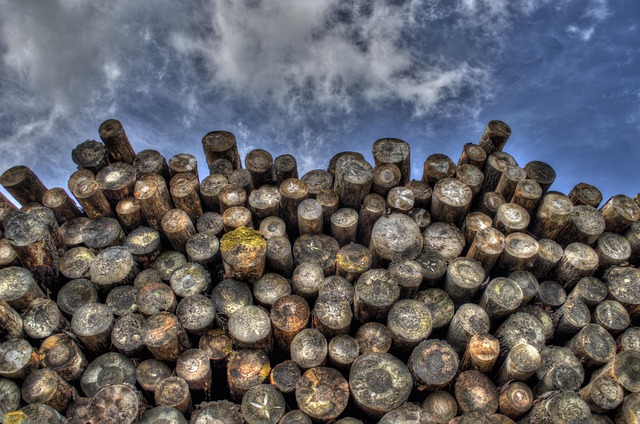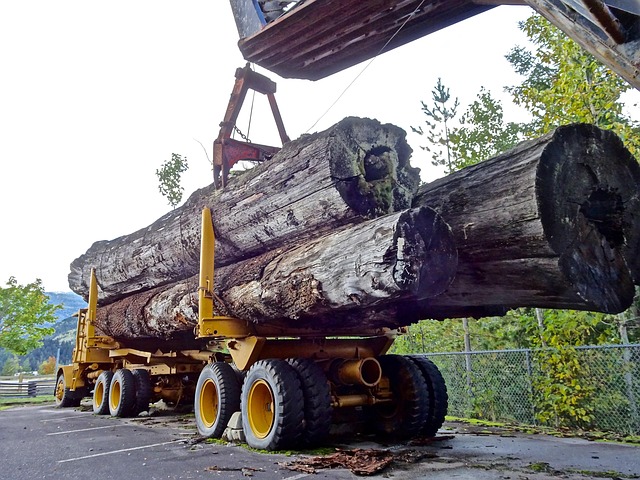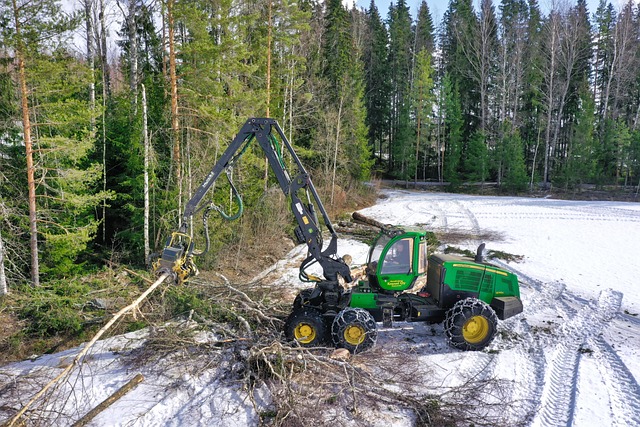Lane County, Oregon's timber industry, historically driven by old-growth forests, has evolved with modern forest management practices. Balancing industrial needs and environmental sustainability, the region faces challenges like habitat fragmentation and climate change but embraces innovative solutions including precision logging and collaborative partnerships. Advanced technologies enhance resource efficiency while preserving biodiversity and ecological health. Community engagement pushes for transparent decision-making, aiming to protect natural heritage through sustainable forest management. Future prospects are positive with increasing demand for sustainably sourced wood products.
“Lane County, Oregon, once renowned for its thriving timber industry, is now at a crossroads, aiming to modernize its forest management practices. This article explores the historical significance of the county’s timber legacy and delves into the challenges and opportunities in forest modernization. We analyze the adoption of sustainable logging techniques, the pivotal role of technology in efficient resource harvesting, and the complex dynamics of community engagement and environmental considerations. Furthermore, it examines the economic implications and future prospects for Lane County’s evolving timber sector.”
- Historical Perspective: Lane County's Timber Legacy
- Challenges in Forest Management Modernization
- Adopting Sustainable Logging Practices
- Technology's Role in Efficient Resource Harvesting
- Community Engagement and Environmental Concerns
- Economic Impact and Future Prospects
Historical Perspective: Lane County's Timber Legacy

Lane County, Oregon, has a rich history intertwined with its timber industry, dating back to the late 19th century. For decades, the county’s forests provided a steady and abundant supply of timber, fueling economic growth and shaping its identity as a lumber hub. The region’s lush, old-growth forests, primarily composed of Douglas fir, spruce, and hemlock, became a key resource for local mills, contributing significantly to the construction of nearby cities and infrastructure.
This legacy has left an indelible mark on Lane County’s culture and landscape. Forest management practices have evolved over time, reflecting a balance between the industry’s needs and environmental sustainability. Today, with increasing awareness of ecological preservation, modern timber harvesting techniques focus on responsible forest stewardship, ensuring the long-term health and diversity of these precious ecosystems while still meeting the demand for local and sustainable timber products.
Challenges in Forest Management Modernization

The modernization of the timber industry in Lane County, Oregon, brings both opportunities and challenges. One significant hurdle is adapting to evolving environmental regulations and sustainable practices, which are crucial for responsible forest management. Balancing the need for timber production with ecological preservation requires a delicate approach.
Lane County’s diverse forests face complex issues such as habitat fragmentation, invasive species, and climate change impacts. Modernization efforts must address these challenges by implementing innovative strategies, including precision logging techniques, reforestation programs, and collaborative partnerships between industry leaders, conservationists, and local communities to ensure the long-term health and resilience of forest resources in the region.
Adopting Sustainable Logging Practices

In recent years, the timber industry in Lane County, Oregon has undergone a significant transformation as local businesses and forest managers embrace sustainable logging practices. This shift is crucial for preserving the region’s diverse ecosystems while ensuring long-term economic viability. By adopting modern, eco-conscious methods, such as selective cutting and habitat conservation, the industry aims to minimize its environmental footprint.
Forest management in Lane County now emphasizes the importance of balanced ecological health. Sustainable logging involves carefully planning and executing cuts to maintain forest diversity, protect water quality, and preserve habitats for native flora and fauna. These practices not only promote biodiversity but also help mitigate climate change by allowing forests to continue acting as carbon sinks, absorbing and storing atmospheric CO2.
Technology's Role in Efficient Resource Harvesting

In the heart of Lane County, Oregon, the timber industry has long been a cornerstone of the local economy and culture. However, the traditional methods of forest management are being increasingly supplemented by advanced technologies that play a pivotal role in efficient resource harvesting. From remote sensing and geographic information systems (GIS) to precision logging equipment, these innovations are transforming how foresters operate.
Through the use of drones and satellite imagery, forest managers can now accurately map and monitor vast tracts of land, enabling more strategic and sustainable harvest planning. GIS technology allows for detailed analysis of soil types, water bodies, and wildlife habitats, ensuring that cutting activities minimize environmental impact. Moreover, precision logging machines equipped with advanced sensors enhance safety by reducing human error and improving efficiency in felling and processing trees, thereby maximizing yields while minimizing waste.
Community Engagement and Environmental Concerns

In the pursuit of modernization, the Lane County Oregon timber industry has faced increasing scrutiny from both the community and environmental advocates. Local residents have become actively involved in forest management discussions, pressing for sustainable practices that balance economic interests with ecological preservation. This engagement reflects a growing awareness of the industry’s impact on the region’s biodiversity and long-term environmental health.
Environmental concerns center around deforestation rates, habitat destruction, and water quality deterioration. Community members argue that traditional logging methods often prioritize short-term gains over long-term forest sustainability. They advocate for more transparent and collaborative decision-making processes, ensuring that all stakeholders have a say in shaping the industry’s future. By fostering open dialogue and adopting innovative forest management strategies, Lane County can strive towards a thriving timber economy while safeguarding its natural heritage.
Economic Impact and Future Prospects

The Lane County, Oregon timber industry’s modernization has brought about significant economic shifts. The traditional reliance on logging and mill operations is evolving with a growing emphasis on sustainable forest management practices. This transition reflects a global trend towards eco-conscious resource utilization, where environmental stewardship aligns with economic viability.
Looking ahead, the future prospects for Lane County’s timber industry are promising. As demand for sustainably sourced wood products rises, efficient and responsible forest management techniques will be key to ensuring long-term success. Investing in innovative technologies and fostering partnerships between local communities, businesses, and environmental organizations can drive the industry forward, creating a balanced ecosystem that supports both economic growth and ecological preservation within Lane County’s forests.
